Exploring Chicago: A Guide to Iconic Sites and Attractions
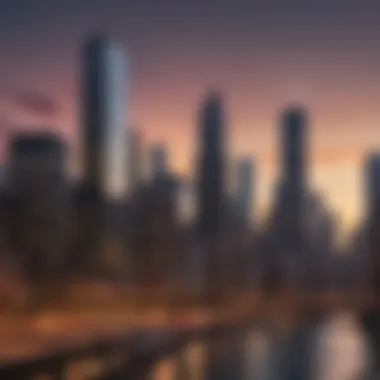

Intro
Chicago, known for its stunning skyline and rich cultural tapestry, offers a plethora of sites that resonate with both history buffs and modern enthusiasts. This guide will navigate through the city’s architectural marvels and vibrant neighborhoods, establishing a comprehensive resource for homeowners, travelers, and design lovers. We'll explore each site, from the iconic art deco structures to the hidden gems that capture the spirit of this remarkable city.
As we traverse the bustling streets, prepare to uncover not just buildings, but stories that reflect Chicago’s evolution. Whether you are drawn to the elegant lines of the John Hancock Center or the historic charm of the Chicago Water Tower, each location has a unique narrative to share. Let’s take a closer look at these exquisite architectural designs throughout the Windy City.
Prelims to Chicago
Chicago, a city that resonates with a rich tapestry of history and culture, is more than just a bustling metropolis in the Midwest. Its importance lies not only in its size but in its impact on American culture, economy, and architecture. Exploring Chicago offers insight into how this dynamic city has molded its distinct identity through its neighborhoods, landmarks, and the diverse voices that call it home. Within this article, we will delve into the key elements that shape Chicago’s narrative as a great American city, examining noteworthy sites that reveal the city's architectural brilliance and cultural richness.
Historical Context
Chicago's roots go deep, tracing back to its founding in the early 1800s. Originally a trading post, it burgeoned into a vital hub during the great migration of the 19th century. The Great Chicago Fire of 1871 was a pivotal moment in architetural history, leading to a remarkable period of rebuilding and innovation. This event, often seen as a fresh start, resulted in the creation of iconic skyscrapers that pushed the boundaries of engineering and design.
Understanding this historical context sheds light on the city’s evolution and resilience. Each landmark tells a story: from the majestic Chicago Cultural Center, which was once the city's library, to the historic Warehouse District that played a key role in the growth of its manufacturing sector. Through a blend of tragedy and triumph, Chicago emerged as a leader in urban design and cultural movements, establishing a legacy that continues to influence trends today.
Cultural Significance
Beyond brick and mortar, the cultural fabric of Chicago is woven from the threads of its diverse communities. The city is a melting pot, home to a multitude of ethnic groups, each contributing to its vibrant cultural landscape. This diversity is reflected in events such as the annual Chicago Blues Festival, which honors the city's role in the genesis of this unique genre of music.
Chicago's cultural significance also sits prominently in its art scene. The Chicago Art Institute harbors artwork from renowned artists like Grant Wood and Georgia O'Keeffe, providing visitors a glimpse into creative expression spanning generations. Furthermore, street art murals in neighborhoods like Pilsen and Wicker Park not only beautify the area but also serve as a narrative of social issues, local pride, and the city's ever-evolving identity.
"Chicago is not just a place; it’s a mood, an attitude, a collection of stories waiting to be told."
Thus, when exploring Chicago, one not only sees architectural design forged from fire and ambition but also walks through streets alive with the legacy of countless cultural contributions. In this context, the city emerges as a multifaceted entity, rich in narratives that beckon exploration and understanding.
Architectural Landmarks
Architectural landmarks hold a special place within Chicago's urban tapestry, serving as vital markers of the city’s history, artistry, and innovation. These structures are not just buildings; they embody the spirit of various eras and the ambitions of the architects who designed them. As one strolls through the streets of Chicago, it’s clear how these renowned sites contribute to the city’s identity and showcase the evolution of architectural styles, from classical to contemporary.
Chicago’s architecture is a testament to resilience and creativity, and these landmarks invite both residence and visitors to appreciate the city's rich history. The juxtaposition of historical styles with modern skyscrapers creates a dynamic skyline that is both visually striking and rich in narrative. By examining these buildings, we unearth stories of culture, economy, and urban development that have shaped Chicago over decades. The following discussion underscores three prominent architectural landmarks: the Willis Tower, the John Hancock Center, and The Art Institute of Chicago.
Willis Tower
The Willis Tower, formerly known as the Sears Tower, is more than just an iconic skyline silhouette; it is a marvel of architectural ingenuity. Completed in 1973, the building was initially the tallest in the world, a proud emblem of Chicago's architectural prowess. Its sleek, black facade rises 1,450 feet into the sky, and the skydeck on the 103rd floor offers unparalleled views of the city and beyond.
Choosing to visit the Willis Tower isn't just about scale; it’s an immersion into the engineering breakthroughs of its time. The structure employs tube-frame construction, a technique designed to withstand wind, making it both an engineering feat and a vital part of Chicago's architectural heritage. Visitors, outfitted in the excitement of standing atop the tallest building, can step out onto glass boxes that extend over the edge, experiencing dizzying heights that provoke a sense of thrill.
In essence, the Willis Tower encapsulates the ambitious spirit of the city, where everyday life flows beneath a monumental statement of progress and possibility.
"The essence of Chicago is a city that refuses to be boxed in; its architecture defies expectations and invites exploration."
John Hancock Center
Not far off, the John Hancock Center stands as another striking example of Chicago's architectural accomplishments. Designed by architect Bruce Graham and structural engineer Fazlur Rahman Khan, the building is celebrated for its bold design and effective use of space. Its distinctive X-braced exterior not only sets it apart visually but also enhances its structural integrity, showcasing an innovative approach to skyscraper construction that was revolutionary for its time.
Completed in 1969, the John Hancock Center is home to offices, residences, and a bustling observation deck that offers panoramic views of Lake Michigan. Visitors flock to this lookout point, marveling at the cityscape that opens before them, where one can catch a glimpse of the shimmering lake juxtaposed against the urban landscape.
The building's rooftop boasts a sky garden, an unusual and delightful feature that allows residents and visitors to connect with nature even amid the urban hustle. Such spaces remind us that architecture is not merely about construction but about the experiences it fosters—where everyday moments can unfold against a backdrop of extraordinary design.
The Art Institute of Chicago
The Art Institute of Chicago stands apart from traditional landmarks as a cultural titan in its own right. Opened in 1893, this museum houses an extensive collection of artworks, making it one of the most prestigious art institutions in the world. The iconic neoclassical architecture, with its grand columns and majestic entrance, sets the tone for artistic exploration within its walls.
Inside, visitors can journey through diverse collections, from Impressionist paintings to ancient artifacts. The building itself has undergone several expansions, seamlessly blending historical and modern elements. Each extension tells its own story while respecting the original architecture, creating a space where creativity thrives.
The structure is more than a museum; it’s a sanctuary for art lovers and a testament to Chicago's commitment to culture and education. The Art Institute demonstrates that architectural landmarks can also serve as custodian of cultural heritage, enriching the community and enchanting those who walk through its doors.
Parks and Outdoor Spaces
When you think about Chicago, towering skyscrapers and bustling streets often come to mind. However, refuge from the concrete jungle can be found in its numerous parks and outdoor spaces. These areas not only provide nature in an urban setting but also serve as social and cultural hubs for the community. Parks in Chicago reflect the city's commitment to green spaces, promoting public health, community engagement, and environmental sustainability.
Millennium Park
One of Chicago's crown jewels is Millennium Park. Opened in 2004, this park has become synonymous with the city’s identity. Its allure comes from stunning architectural features like the Cloud Gate, affectionately known as "The Bean," which beckons visitors to snap that perfect selfie. Let's not forget the Jay Pritzker Pavilion, designed by Frank Gehry, hosting concerts and events while offering an amphitheater-like experience for all.
Key highlights of Millennium Park:
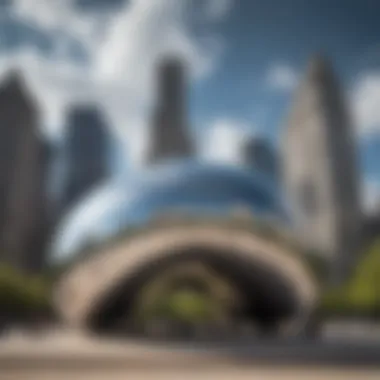
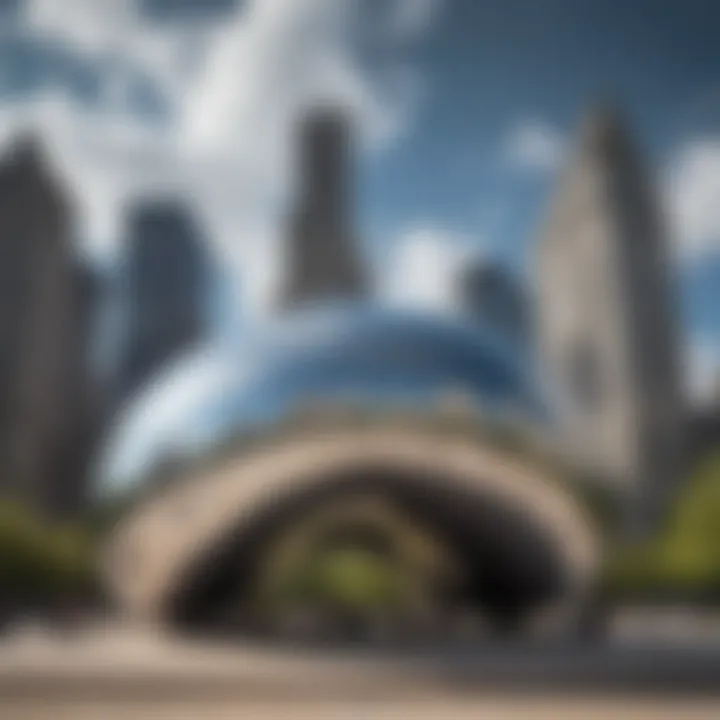
- Art Installations: With dynamic public art displays, the park frequently showcases local artists and rotating exhibits.
- Green Spaces: Despite its urban hustle, it features lush gardens and open lawns, allowing people to relax away from the city’s bustle.
- Accessibility: Designed with everyone in mind, the park is wheelchair-friendly, making it a welcoming territory for all.
Visitors flock not just for the sights but also for community events and festivals ranging from outdoor movie screenings to the popular Chicago Blues Festival.
Lincoln Park
Moving on to Lincoln Park, a neighborhood named after the famous president, this area offers a mix of lush greenery and vibrant activity. It stretches along the Lakeshore, making it an ideal spot for both locals and tourists. The park itself covers over 1,200 acres, featuring a wide range of attractions: the Lincoln Park Zoo, the Conservatory and a number of sports facilities.
For those looking to enjoy fresh air, here are a few reasons to visit Lincoln Park:
- Flora and Fauna: With its diverse landscape, you can stumble upon nature trails, wetlands, and gardens, making it a prime location for photographers and nature lovers.
- Family-Friendly Activities: The zoo is free and boasts over 200 species, offering an engaging and educational experience for families.
- Recreational Opportunities: Facilities abound for biking, jogging, and other outdoor pursuits, encouraging a healthy lifestyle for visitors.
Living near Lincoln Park not only means a community snugged in greenery but also an opportunity to engage with diverse cultural events throughout the year.
Grant Park
Lastly, Grant Park holds a special place in the heart of Chicago, often referred to as "Chicago's Front Yard." Spanning over 300 acres, this park is home to a number of essential gatherings and festivals, such as the famous Lollapalooza music festival. The park holds significant historical value, serving as the backdrop for various public events, demonstrations, and art fairs.
Here’s what makes Grant Park worth the visit:
- Historic Sites: Within its space lies the Art Institute of Chicago and the iconic Buckingham Fountain, a sight to behold during the summer months, when its water dances beautifully.
- Public Events: It’s a hotspot for major city events like The Taste of Chicago, drawing countless visitors each year.
- Relaxing Spot: The park provides ample seating areas and gardens to kick back and enjoy the scenery.
End
Chicago's parks are not mere afterthoughts; they are essential components of urban life in the city. They provide necessary green spaces and hold tremendous cultural and social significance to its residents. From the artistic allure of Millennium Park to the family-friendly vibe of Lincoln Park and the historic essence of Grant Park, these outdoor spaces embody the spirit of a city that thrives on community interaction and natural beauty. Engaging in these parks can enhance your experience of Chicago, whether you're a steadfast local or a curious traveler.
Cultural Institutions
Cultural institutions are the backbone of Chicago's identity, representing the city's dedication to arts, education, and history. This section highlights how these establishments foster a sense of community, enrich the local culture, and provide educational opportunities for residents and visitors alike. Their significance lies not just in preserving relics of the past but also in serving as incubators for new ideas, innovation, and artistic expression.
"Cultural institutions in Chicago are where the heart and soul of the city truly come alive."
The Field Museum
The Field Museum is a treasure trove of natural history, showcasing extensive collections that span millions of years of our planet's past. One of its most famous exhibits, Sue, the T. rex skeleton, draws in crowds with wide-eyed wonder. What makes the Field Museum captivating is not just the exhibits but the interactive experiences that encourage learning. From discovering ancient fossils to engaging with cutting-edge scientific research, this museum is a hub for knowledge seekers of all ages.
Additionally, the museum plays a crucial role in conservation efforts and cultural appreciation. Its academic programs often collaborate with local schools, introducing students to the wonders of science and the importance of preservation. In a city known for its diverse demographic, the Field Museum serves as a platform for understanding the interconnectedness of all life on Earth.
Chicago Symphony Orchestra
A sound experience unlike any other awaits at the Chicago Symphony Orchestra. This institution is not merely about music; it embodies the artistic heritage of the city. With performances held at the stunning Symphony Center, the orchestra attracts world-renowned conductors and soloists. The resonating sound of a live symphony can evoke a range of emotions, drawing the audience deep into the realm of classical music.
Engagement extends beyond mere attendance, as the CSO offers educational programs for local youth, aiming to ignite a passion for music among the younger generation. The blending of creativity and community outreach underlines its role in fostering cultural appreciation throughout Chicago.
Museum of Science and Industry
The Museum of Science and Industry stands as a monument to innovation and discovery. Housed in a former palace from the 1893 World’s Fair, this museum is the largest science museum in the Western Hemisphere. Its exhibits are interactive, offering visitors a hands-on approach to learning about technology, engineering, and science. From the captivating submarine exhibit to the intricate model railroad, every corner is filled with educational opportunities.
It’s a fascinating place for families, educators, and even budding engineers. The museum runs various workshops and events that encourage critical thinking and spark curiosity. As one of Chicago's most visited institutions, it plays a significant role in shaping the scientific landscape of the city, inspiring future generations to explore the wonders of technology and industry.
Historical Neighborhoods
Chicago’s historical neighborhoods offer a vibrant tapestry of the city’s past, weaving together stories of immigration, architecture, and culture. As one wanders through these neighborhoods, there’s a palpable connection to the history that shaped modern Chicago. Real estate enthusiasts and travel lovers alike will find that these districts not only showcase stunning visual elements but also reflect the enduring spirit of the city. Each neighborhood comes with its unique characteristics, creating a rich backdrop for exploration and appreciation.
The Loop
The Loop acts as the heart of Chicago, both geographically and historically. This bustling area is home to iconic skyscrapers, including the Willis Tower, and it serves as a central hub for commerce and culture. It’s interesting to note that the name "Loop" originated from the circular train route that loops around the district, highlighting its role as a transport nexus. Exploring this neighborhood, you’ll find not only stout office buildings but also landmarks like the Chicago Cultural Center, which offers free art exhibits and concerts.
Walking through the Loop gives one a firsthand experience of the city’s architectural grandeur. Tourists and locals alike flock to see the famous Cloud Gate sculpture, commonly referred to as "The Bean." The Loop exemplifies how Chicago continually blends its past with present developments, making it a must-visit.
"The Loop is where old-school vibe meets modern hustle."
Old Town
Old Town stands out as a sanctuary for Chicago’s historic charm. Known for its Victorian-era buildings and vibrant arts scene, this neighborhood resonates with a sense of nostalgia. Back in the 1960s, Old Town was a beacon for artists and free thinkers — its founding as a counterculture district is reflective of its bohemian spirit. As you stroll along its streets, you can witness beautifully preserved architecture and charming storefronts, which provide an excellent backdrop for photographs or a casual day out.
One cannot miss the historic Old Town Square and the famed Second City comedy club, where laughter and creativity live on. The mix of quaint cafés and eclectic shops make Old Town not just a historical point, but also a lively community space.
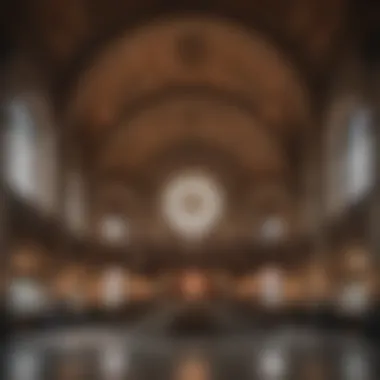
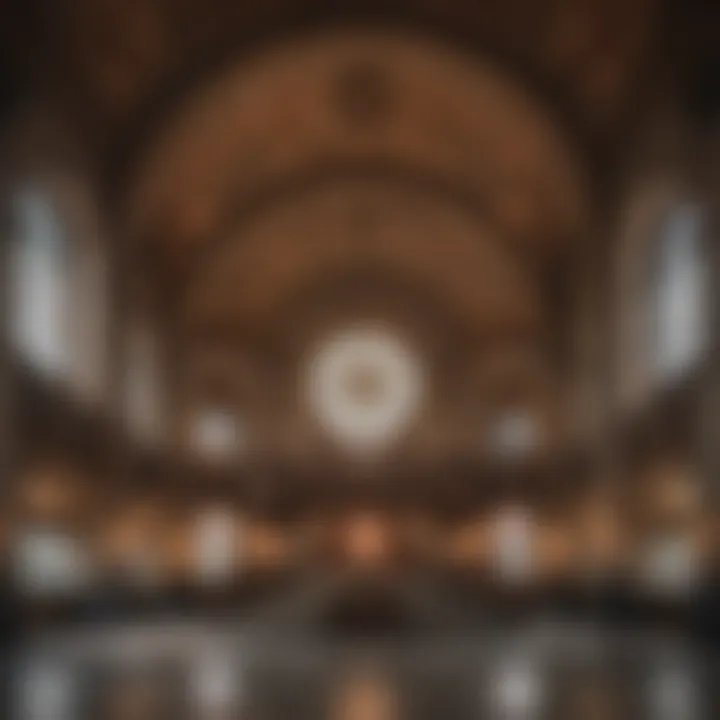
Chinatown
Chinatown is a rich cultural enclave that showcases the contributions of the Chinese immigrant community to Chicago. This neighborhood is a model of cultural retention amidst urban growth, featuring beautiful murals, traditional architecture, and vibrant festivities. When visiting, the stunning Chinatown Gate welcomes guests with open arms, symbolizing the fusion of the past and present.
Here, culinary delights abound — from robust dim sum to aromatic herbal shops. Moreover, the Chinese New Year celebrations here are a sight to behold. Chinatown offers a deep dive into another aspect of Chicago’s diverse heritage, illustrating how varied cultural influences have shaped the city.
With thriving local businesses and community events, Chinatown not only serves as a cultural hub but also as a testament to the resilience of immigrant communities within Chicago.
In summary, each neighborhood in Chicago tells its own unique story, rich with history and culture. The Loop, Old Town, and Chinatown stand as significant markers of the city’s dynamic past and its ongoing evolution. Whether you're a potential homeowner, a traveling wanderer, or a design aficionado, these historical neighborhoods offer a deep well of exploration and discovery.
Culinary Highlights
Chicago's culinary scene stands as a testament to its rich cultural tapestry. The city's food reflects the influences of various immigrant communities, creating a gastronomic landscape that is both diverse and iconic. Thus, highlighting these culinary gems is essential not only for food lovers but also for anyone interested in understanding the city's cultural evolution.
Deep-Dish Pizza
Deep-dish pizza is synonymous with Chicago and can’t be overstated when discussing the city’s culinary highlights. This unique take on pizza features a buttery crust that’s robust enough to hold boundless layers of cheese, savory toppings, and a rich tomato sauce on top.
Visiting Chicago without trying deep-dish pizza would be akin to going to Paris and skipping the Eiffel Tower. Popular spots like Lou Malnati's and Giordano's have fans who swear allegiance to their particular version. Each place has its twist, with some opting for a stuffed interpretation and others staying classic.
When savored, deep-dish offers a warm hug from the inside - heartily filling and dripping with flavors. It’s best enjoyed with a fork and knife, per local tradition.
Chicago-style Hot Dogs
Next up on our culinary tour is the Chicago-style hot dog - a beloved classic that many carry a deep-seated affection for. This isn’t just any hot dog; it’s a full-on experience. Topped with a medley of ingredients like yellow mustard, chopped onions, bright green relish, tomato slices, a pickle spear, and the all-important sport peppers, it’s a culinary dance of flavors.
Interestingly, Chicagoans adhere to a no-ketchup rule when it comes to their hot dogs, claiming that it would mask the exquisite taste of the dog itself. With hotspots like Portillo's and Superdawg serving up these iconic creations, it’s easy to see why this bite is taken with such seriousness.
Remember, a Chicago-style hot dog is best enjoyed while standing on a street corner, watching the bustling life of the city pass by.
Local Breweries
No culinary journey through Chicago would be complete without a nod to its vibrant local breweries. In recent years, Chicago has transformed into a haven for craft beer aficionados. With a plethora of options ranging from IPAs to stouts, the city caters to every palate.
Some local favorites include:
- Revolution Brewing – Known for its hop-forward beers, it’s a must-visit.
- Half Acre Beer Company – A pioneer in the craft scene, their Daisy Cutter is a staple for many.
- Lagunitas Brewing Company – This popular brewery brings a touch of California with its flavorful brews.
Exploring the local breweries is about more than just tasting. It's about engaging with the community and discovering the stories behind each brew. Many breweries offer tours, tasting sessions, and even food pairings that elevate the experience.
"Beer is proof that God loves us and wants us to be happy." – Benjamin Franklin
Seasonal Attractions
In a city as dynamic as Chicago, seasonal attractions play a crucial role in shaping the local culture and community life. Every year, as the seasons change, Chicago comes alive with an array of events and activities that reflect not only the weather but also the spirit of the Windy City. These attractions create opportunities for locals and visitors alike to come together and partake in unique experiences, thus enhancing their understanding of the city's vibrant identity. Seasonal events are markers that showcase Chicago's adaptability and creativity, adding to the allure of exploring this iconic metropolis.
Summer Festivals
Summer in Chicago is a time when the streets are bustling with energy. Festivals abound, celebrating everything from music to food, providing a platform to showcase local talent. One of the most prominent events is the Chicago Blues Festival, where musicians grace the stage to pay homage to Chicago's rich blues legacy. This event not only brings joy to attendees but also educates them about the genre's historical significance in the city.
Apart from music, food festivals like Chicago Gourmet capture the essence of the city's culinary diversity. Attendees sample dishes from top chefs and restaurants, savoring the flavors that make Chicago's food scene unique. Participating in these gatherings offers a chance to connect with others over shared interests and indulges one's taste buds in delightful experiences.
Moreover, summer art fairs, such as The Old Town Art Fair, allow local artists to display their work in a vibrant setting, fostering community appreciation for the arts. These events during the summer months help folks to shake off the winter chill and revel in the warm weather, heightening the feeling of camaraderie that makes Chicago special.
Winter Wonders
As the temperature drops, Chicago does not shy away from the cold. In fact, it embraces the winter with a variety of enchanting attractions that transform the city into a snowy wonderland. The Christkindlmarket, modeled after traditional German Christmas markets, captures the festive spirit beautifully. Here, visitors can enjoy warm drinks, delicious treats, and handcrafted goods, creating a cozy atmosphere in the heart of downtown.
Another highlight of the winter season is the annual Ice Skating Rink at Millennium Park. It serves as a picturesque gathering place for friends and families. Skating under the iconic skyline and among shimmering holiday lights creates a memorable experience, one that’s deeply intertwined with the fabric of Chicago's winter culture.
Key destinations during this time include:
- Lincoln Park Zoo Lights, which delight visitors with a magical display of holiday lights while supporting local wildlife.
- The Winter WonderFest at Navy Pier offers indoor winter activities for families, providing endless fun away from the cold.
These seasonal wonders not only offer entertainment but also promote a sense of community and togetherness during the colder months. In this manner, Chicago showcases its ability to inspire enjoyment throughout the year, regardless of the weather.
"Every season in Chicago has its own unique charm, creating a cycle of experiences that keeps the city vibrant and inviting."
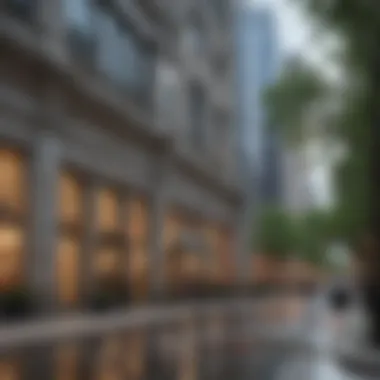
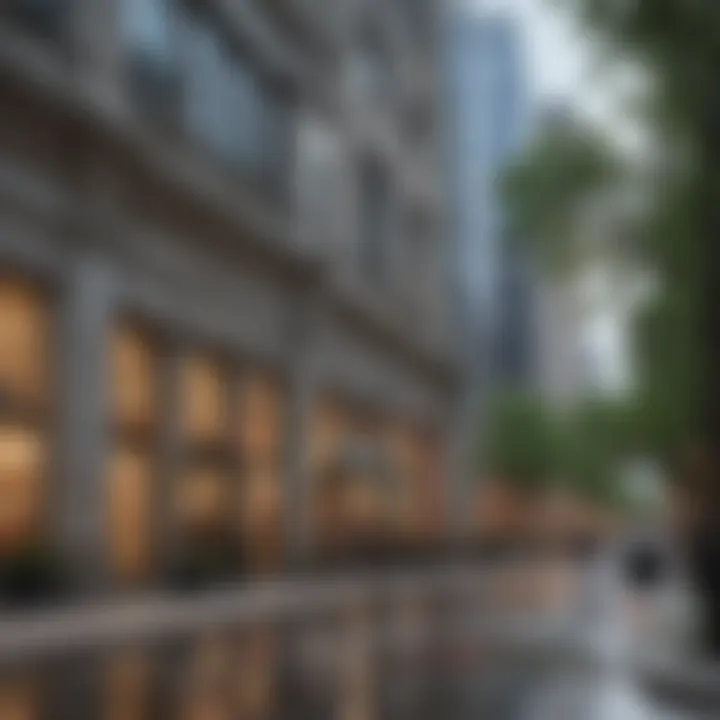
Local Art and Murals
Art in its many forms serves as a reflection of the cultural heartbeat of a city, and Chicago is no exception. The local art scene, especially in the form of public murals and street art, adds a unique flavor to the urban landscape. Such artistic expressions provide an engaging way for both locals and visitors to connect with the city's rich heritage. Beyond mere decoration, they foster community engagement, create spaces for dialogue, and often address social issues.
Exploring the vibrant art scene gives insight into the values and stories of the neighborhoods. Murals can be found on the sides of buildings, transforming mundane surfaces into canvases that narrate powerful stories or showcase the talents of local artists. These works not only beautify the environment but also invite discussion about the themes portrayed, from identity and history to hope and resistance.
The significance of this art extends beyond aesthetics; it affects local pride and can even influence economic growth through tourism. By investigating these artistic locales, one can appreciate Chicago in a deeper context, moving beyond typical tourist paths to embrace authentic cultural experiences.
"Public art is the conscience of the city, a testament to its humanity."
Street Art in Wicker Park
Wicker Park stands as a beacon of artistic innovation in Chicago. Known for its hip vibe and youthful energy, this neighborhood boasts an array of street art that mirrors its eclectic spirit. Here, walls become canvases, portraying diverse styles that range from intricate murals to bold graffiti.
The art found throughout Wicker Park often serves more than just decorative purposes. Many pieces delve into issues close to the community's heart, including gentrification, social justice, and the celebration of multiculturalism. This stark, powerful imagery ignites conversations among locals and encourages exploration of the narratives behind each stroke and color.
Street art festivals in Wicker Park further enliven the scene, attracting artists from various backgrounds and inviting collaboration. These events showcase remarkable talent while providing a platform for emerging artists, making the neighborhood a hub for creative expression.
Murals in Pilsen
Pilsen presents a striking contrast to Wicker Park, infused with a rich history harking back to Mexican heritage. The murals here are not merely decorations; they are storytelling tools, vividly reflecting the culture and struggles of the community. From representations of historical figures to vibrant depictions of daily life, the murals in Pilsen serve to honor the past while inspiring future generations.
An essential aspect of these murals is their capacity to inform and educate. Many works depict significant cultural events, enabling viewers to grasp the complexities of Chicago's history, particularly the struggles faced by the Mexican-American community. Guided mural tours are common, providing strangers on the street insights into the artistic and cultural significance embedded within each mural.
Visitors to Pilsen should be prepared for an immersive experience where art encounters life at every corner. The local art scene here intertwines seamlessly with the daily activities of the residents, encouraging a dialogue that is as relevant today as it was in the past.
In summary, exploring the local art and murals of Chicago is more than just an aesthetic journey. It's a lens through which the city's intricate tapestry of history, culture, and community can be appreciated, making it an essential part of any exploration of this remarkable city.
Transportation Within the City
Navigating Chicago is a vital part of experiencing what the city has to offer. Known for its diverse transport options, the city caters to various needs, whether you're dashing to a meeting in the Loop or exploring the vibrant art scene in Pilsen. Understanding the transport landscape encourages residents and visitors alike to get the most out of their time spent within the city.
The variety of transportation methods available is not just for convenience but also promotes a sense of community and connectivity. Shifting from a car-centric lifestyle to a more varied transit approach can reduce traffic congestion, leading to a more pleasant urban environment. Additionally, utilizing public transport can often be more economical, allowing folks to channel their funds towards enjoying local dining and cultural experiences.
Choosing the right mode of transport in Chicago makes a world of difference and establishes a deeper connection with the city.
Public Transit Options
When thinking about public transit in Chicago, the CTA (Chicago Transit Authority) is the first thing that comes to mind. The system includes the L train and a network of buses that together form a solid backbone of urban transport.
- The ‘L’ Train: An elevated train system that runs through various neighborhoods. With multiple lines—Red, Blue, Green, and others—it's often the fastest way to leap across town. Get a Ventra card to hop on easily.
- Buses: Complementing the train system, CTA’s buses serve areas where the train tracks don’t reach. They provide a reliable option, running frequently throughout the day and into the wee hours.
- Mobility Access: The CTA is also committed to making transit accessible, offering services like ADA-compliant buses. That's important for ensuring everyone can enjoy the city's offerings.
Many visitors find that riding public transportation adds an extra layer of authenticity to their Chicago experience. Not only do you get to see neighborhoods at street level, but it can also be an excellent way to interact with locals.
Cycling in Chicago
Cycling in Chicago has blossomed over the last decade. With the city striving to be more bike-friendly, it's becoming easier than ever to navigate the streets on two wheels.
First off, the bike lanes are expanding. The city has made significant investments in creating protected bike lanes that separate cyclists from traffic, offering peace of mind as you glide through the streets. Here are some highlights that make cycling a worthy venture:
- Bike Share Programs: Systems like Divvy provide a convenient way to rent bikes throughout the city. You can pick up a bike at one station and drop it off at another, making it adaptable for short rides.
- Scenic Routes: A ride along Lake Michigan not only offers stunning views but also connects various parks. The Lakefront Trail is a paradise for cyclists seeking fresh air and beautiful scenery.
- Bike-Friendly Community: More residents are embracing cycling, promoting a culture where cyclists share the road responsibly. Local groups often organize rides, bringing people together in a healthy, environmentally friendly way.
This shift towards cycling isn’t just about transportation; it represents a broader commitment to sustainability and urban wellness.
"Not just getting from point A to point B, commuting in Chicago is often a journey and an experience in itself."
Understanding these transportation elements makes navigating the city straightforward and enjoyable, enriching your overall Chicago experience.
Closure
In capturing the essence of Chicago, this article serves to illuminate the myriad experiences the city offers, all interwoven with its storied past. As we have explored, Chicago is far more than just a place on a map; it is a dynamic tapestry of history, culture, and innovation. The historical landmarks stand as sentinels to the city's past, while the culinary and cultural institutions reflect its vibrant present.
Understanding Chicago's identity is a crucial element for anyone considering the city's appeal, whether for residence or leisure. With its unique neighborhoods like Chinatown and Old Town, one can see how different facets of culture coalesce within a single city. Visitors and residents alike can find joy in sampling a deep-dish pizza or learning about the wonders at the Museum of Science and Industry.
Here are several key takeaways:
- Architectural diversity: Chicago's skyline narrates a story of evolution, with every building marking a chapter in its history.
- Culinary delights: Food is an integral part of the Chicago experience, with unique offerings that are seldom found elsewhere.
- Cultural events: Seasonal attractions add layers to the city's vibrancy, giving life to its streets year-round.
By synthesizing the information presented throughout this guide, it becomes clear that Chicago's charm lies in its contradictions and its ability to surprise. The city is constantly changing, making it a place where every visit can feel fresh and novel. Anyone who walks its streets can sense an energy that speaks to both tradition and innovation.
"Chicago is not just a city; it's a spectacle that demands to be explored—both in its grandeur and in its quiet corners."
For anyone captivated by art, history, or simply the pursuit of new experiences, Chicago beckons with open arms. It’s a city poised on the brink of tomorrow, while still cherishing the lessons of its past. Embracing Chicago is not just about visiting; it’s about becoming part of its ongoing narrative. In this fast-paced world, taking the time to discover its noteworthy sites will undoubtedly enrich one’s understanding of not only the city itself but of the broader American story.















